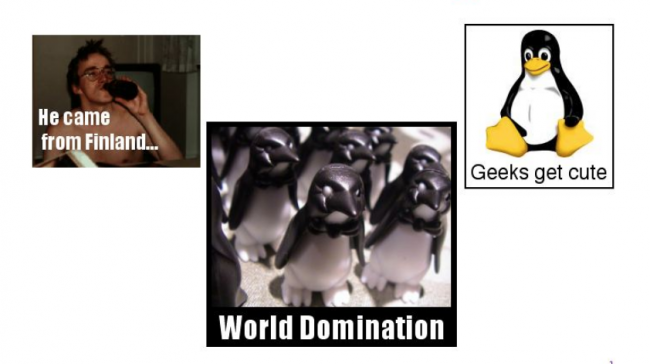When the Problem Is the Story

Linux isn't a story anymore.
That's a good thing, but not an interesting one. Let me explain.
Journalism's main product is the story. In newsrooms, the three words uttered most often by editors to reporters are "What's the story?"
As I was taught by an editor long ago—and as I have found to be true constantly ever since—all stories are about three things:
- A character. Usually human, but not always. Could be a cause. A sports team. A political party. Could be good, or bad, or neither. All that matters is that the character is interesting. You can also have more than one, but a single one is better.
- A problem or conflict. A situation that challenges the character, or characters, further defining them and making them more interesting. Problems and conflict keep people interested, so they keep reading, watching, listening, turning pages, talking to others about it, and "move the narrative along" (as the news watchers like to say).
- Movement toward resolution. Doesn't matter if the end never arrives. Hell, look at soap operas. You just have to keep the story moving in the direction of conclusion. Newsroom aphorism: "No story ever starts with 'Happily ever after'." Another: "If your team is up forty points with five minutes left, your new story is about how you get out of the parking lot ahead of traffic."
All three of those are why Linux isn't much of a story any more, even though it's bigger in the world than it has ever been.
Linux had character when it was easy to cast as an underdog operating system, and the problem was beating Windows. Linus Torvalds, the father of Linux, did his best not to be interesting, but his fans made him interesting anyway:

Us included. The above is from a slide show that was featured in a story I wrote back in 2002 that's off-web at the moment, but also beside the point, which is that Linus and his penguins were characters in stories that were interesting at the time and aren't anymore.
That's because Linux has achieved the world domination it longed for in the early years.
Yes, Linus as a character got interesting for a few minutes last month (top results in a Google News search for "Linus Torvalds" range from 22 to 29 days old), but that story is too stale to be interesting now, even though the issues around it still matter.
And that's my point here. Lots of subjects matter that stories do a lousy job of telling.
But to journalism, and to the human beings journalism addresses, stories matter more than anything. Stories are clearly the base format of human interest.
And now, here in the digital world we now co-occupy with the physical one, it's easier to tell stories than ever. Those who tell stories well, or who are fully interesting as characters, or who know how to "move the narrative along," are winning at the new game that journalism has become.
Exhibit A through X for that case is the character who now runs the United States. He's hard to beat as a character, causes and amplifies conflict (or what appears to be conflict, and in journalism there is often not much difference), and keeps new conflicts moving forward pretty much constantly. Never mind the politics or the particulars. Just look at the three elements that comprise a story and you'll see why this one character and what he does utterly dominates the journalistic world right now.
Meanwhile fully important and consequential stuff just lies there, being uninteresting—except to specialists like our readers here, who still care about this operating system that has become as elemental to the technical world as oxygen is to the living one.
This is a topic that needs a lot of visiting by people who care about journalism, and not necessarily by Linux geeks.
But I'm not sure we'll ever get past the basic flaws inherent in journalism's stock-in-trade, meaning also in human nature itself. Stories are just too damned interesting.
Speaking of which, this whole topic was the subject of my first TED talk, given at TEDx Santa Barbara last month, and titled The story isn't the whole story.
And I'm hardly close to my own conclusions on the topic. I just want to share my own thoughts and observations, so far, using Linux as an example.
By the way, that top photo is from Linux World Expo in 2005, and kind of explains itself.










